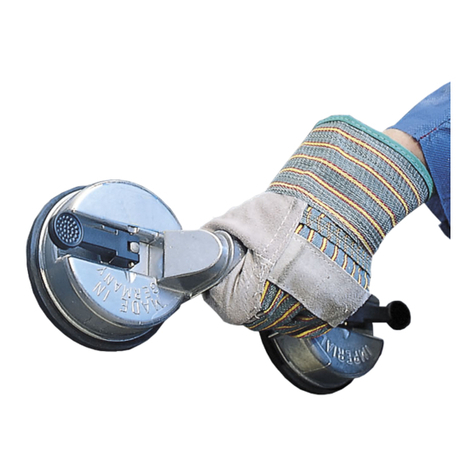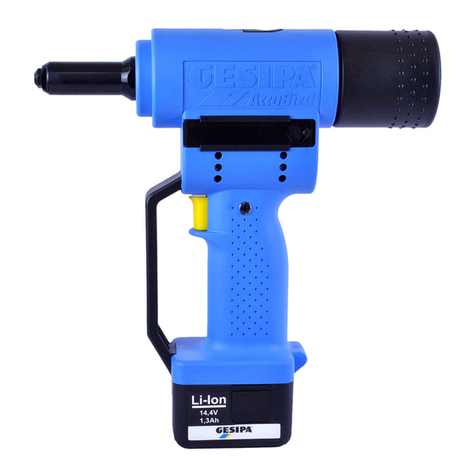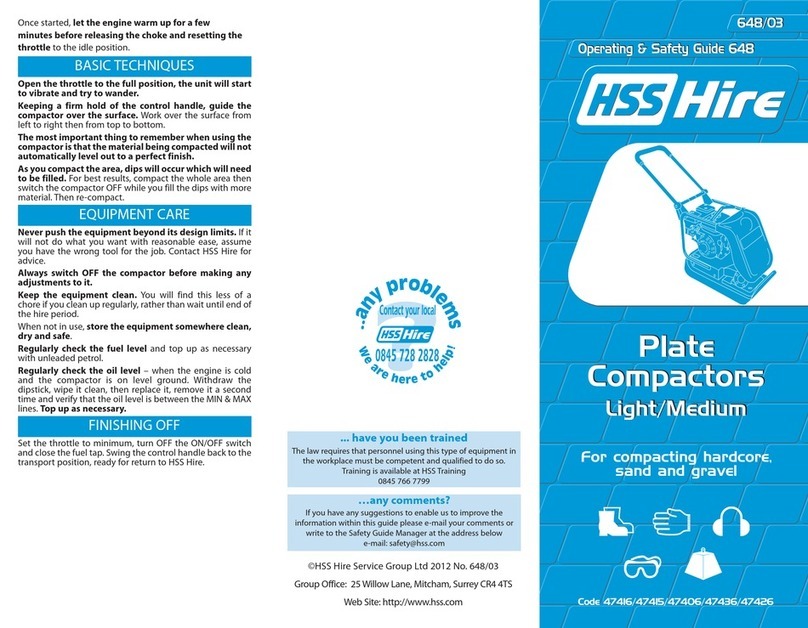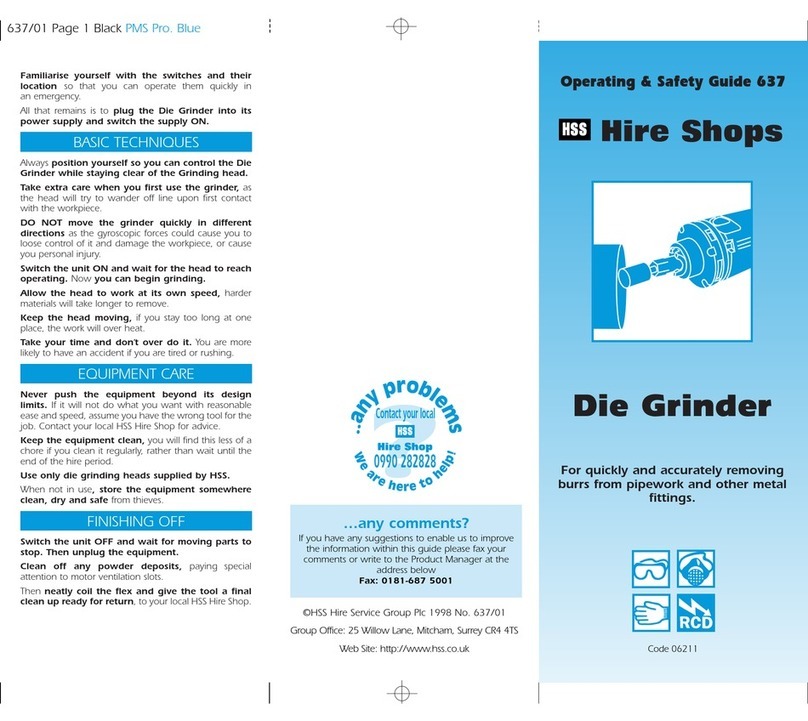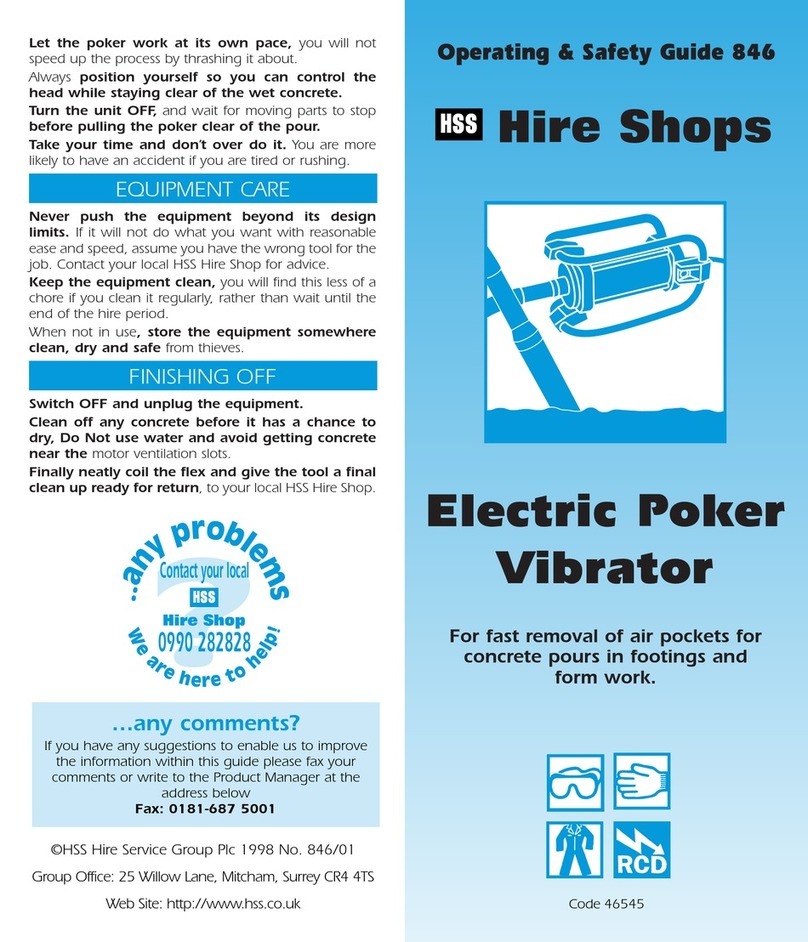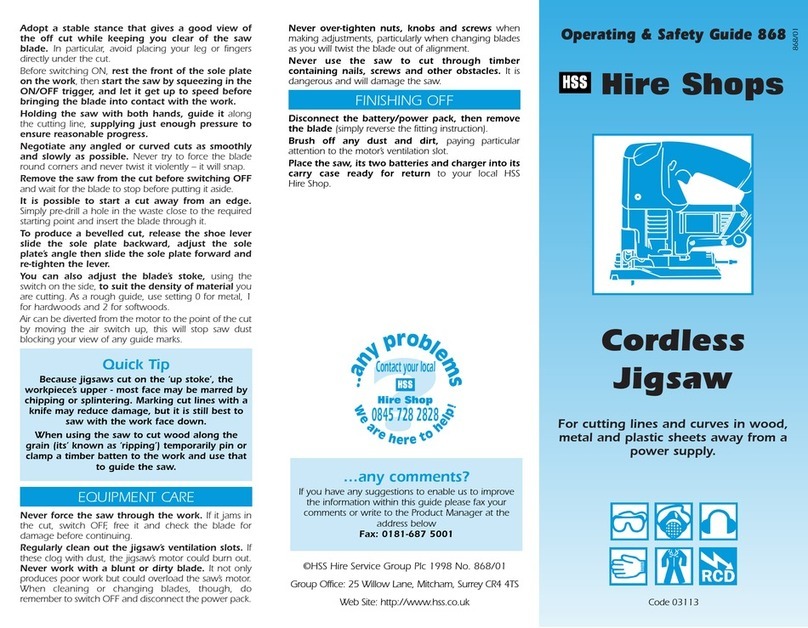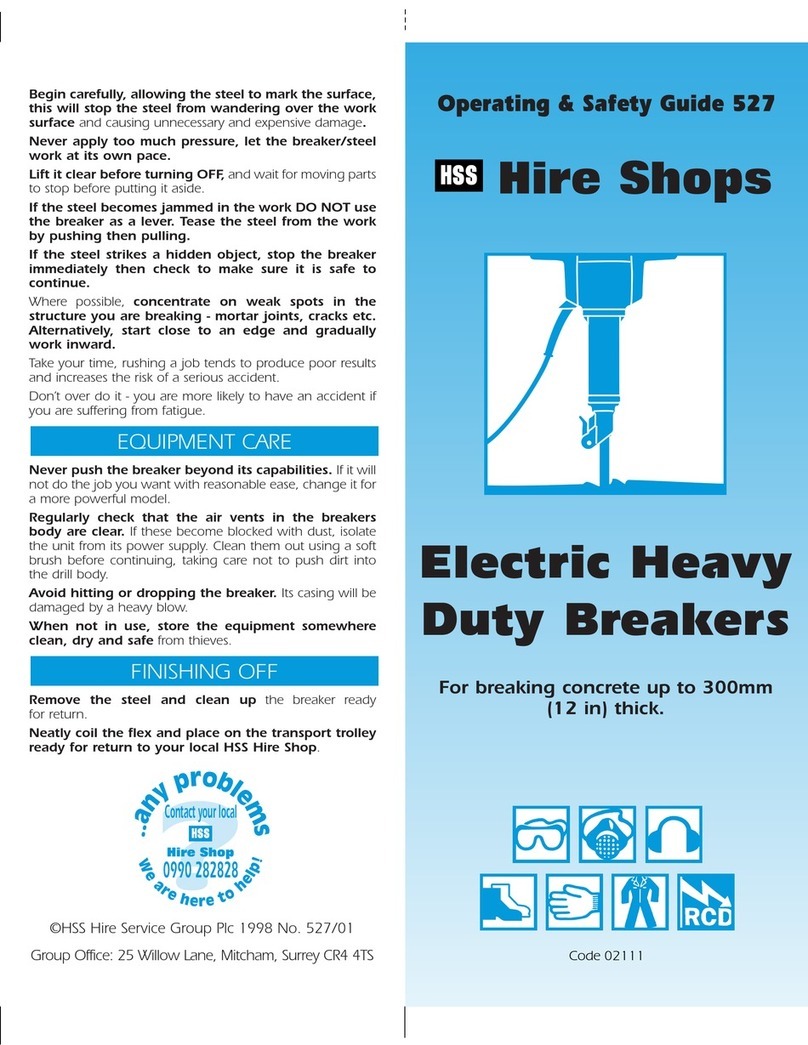For advice on the safety and suitability of this equipment
contact your local HSS Hire.
There is a serious risk of personal injury if you do not
follow all instructions laid down in this guide.
The hirer has a responsibility to ensure that all
necessary risk assessments have been completed prior
to the use of this equipment.
This equipment should only be used by an operator
who has been deemed competent to do so by his/her
employer.
This equipment should be used by an able bodied,
competent adult who has read and understood these
instructions. Anyone with either a temporary or permanent
disability, should seek expert advice before using it.
Keep children, animals and bystanders away from the
work area. Cordon off a NO GO area using cones and
either barriers or tape, available for hire from your local
HSS Hire.
Never use this equipment if you are ill, feeling
tired, or under the influence of alcohol or drugs.
Wear practical, protective clothing, gloves and
footwear. Avoid loose garments and jewellery
that could catch in moving parts, tie back long hair.
This equipment generates potentially harmful
noise levels. To comply with Health & Safety at Work
regulations, ear defenders must be worn by everyone in
the vicinity.
Safety goggles MUST be worn by everyone in the
work area while the equipment is in use.
Some materials when broken contain substances
which, when inhaled, can be harmful to health. A
suitable mask must be worn when using this equipment.
Never use the equipment near combustible materials or
in potentially explosive atmospheres.
Keep the electric motor’s air-vents clear at all times.
Make sure you know how to switch this machine OFF
before you switch it ON, in case you get into difficulty.
Always switch off and unplug the equipment before
changing steels. Never leave it switched on and
unattended.
Always hold the power tool securely with both hands on
the grips provided. Keep the grips dry, clean and free from
oil and grease.
Take special care when breaking anything containing
pipework or electrical cables. If in doubt, hire a cable
avoiding tool to determine the exact position of such
hazards.
Do not overreach. Keep proper footing and balance at
all times. This enables better control of the power tool in
unexpected situations.
If working above ground-level, always work from a
suitably stable work-platform, such as an access tower.
Do not work from ladders or steps.
The power tool must be used only in a dry environment.
Do not try to repair or modify the equipment. If this tool
can’t do what you expect or fails to work return to HSS Hire.
GENERAL SAFETY
IDENTIFIER
GETTING STARTED
Chuck and chisel
position
adjustment
BASIC TECHNIQUES
Never use the power tool until you have fully read and
understood this User Guide and the equipment has
been properly set up using the information it contains.
The power tool is an electrically-powered breaker with
electropneumatic hammering mechanism designed for
heavy chiseling work. The power tool is designed for
breaking / removing and demolishing concrete, masonry,
stone or asphalt. Working on materials hazardous to the
health (e.g. asbestos) is not permissible.
SETTING SIDE-HANDLE
Set the side-handle to a comfortable working position.
Release the side handle clamping band by turning the
knob. Relax the tension on the side handle clamping ring
and slide it over the chuck and onto the cylindrical section
at the front end of the power tool. Pivot the side handle into
the desired position. Secure the side handle by tightening
the knob.
FITTING STEEL
The chisel can be adjusted to 6 different positions (in 60°
increments). This ensures that flat chisels and shaped
chisels can always be set to the optimum working position.
Before inserting chisel check that the connection end is
clean and lightly greased. Clean it and grease it if necessary.
Push the insert tool into the chuck and rotate it while
applying slight pressure until it engages in the guide grooves.
Push the insert tool further into the chuck until it is heard to
engage.
Check that the insert tool has engaged correctly by pulling it.
SWITCHING ON
To switch on the power tool plug the supply cord into the
power outlet and press the ON / OFF switch.
WORKING AT LOW TEMPERATURES
The unit must reach a minimum operating temperature
before the hammering mechanism begins to operate.
Bring the power tool to the minimum operating
temperature by switching it on and allowing it to run and
warm up. Bring the tip of the chisel into contact with the
work surface at regular intervals (approx. every 30 sec.) to
check whether the hammering mechanism has begun to
operate. Repeat the procedure if the hammering
mechanism does not begin to operate.
NOTE: As starting is electronically controlled, the
power tool’s starting characteristics may be different
in cold conditions.
ELECTRICAL SAFETY
This power tool is designed to plug in to 110V power
socket, so it must be provided with a suitable 110V
generated power supply, or powered from the mains via a
suitable 110V transformer.
When necessary use only extension cords of a type
approved for the application and with conductors of
adequate cross section. The power tool may otherwise
lose performance and the extension cord may overheat.
Check the extension cord at regular intervals. If shows any
signs of damage replace immediately.
When the equipment needs extension cord it is
recommended to use minimum 2,5 mm2cross section cord
with maximum length of 20m.
When working outdoors, use only extension cords that
are approved and correspondingly marked for this
application.
Extension leads should be fully unwound and loosely
coiled, away from the equipment. Never run them
through water, over sharp edges or where they could trip
someone.
If the equipment fails, or if its flex or plug gets
damaged, return it. Never attempt to repair it yourself.
Keep flexes out of harm’s way and clear of moving parts.
To reduce the risk of electric shock, use a suitable
RCD (Residual Current-Operated Device) available
from your local HSS Hire.
Never carry or pull the tool by its flex.
Ensure the equipment is switched OFF before plugging
it into it’s power supply.
Grip
On / off switch
Supply cord
Power level
selection switch
Side handle
Knob
Ventilation
slots
WARNING
If the power tool starts without pressing the on/off
switch when the supply cord is plugged back in after
unplugging, the unit must be returned to HSS Hire.
Service
indicator
Power level
indicator
Ventilation
slots


